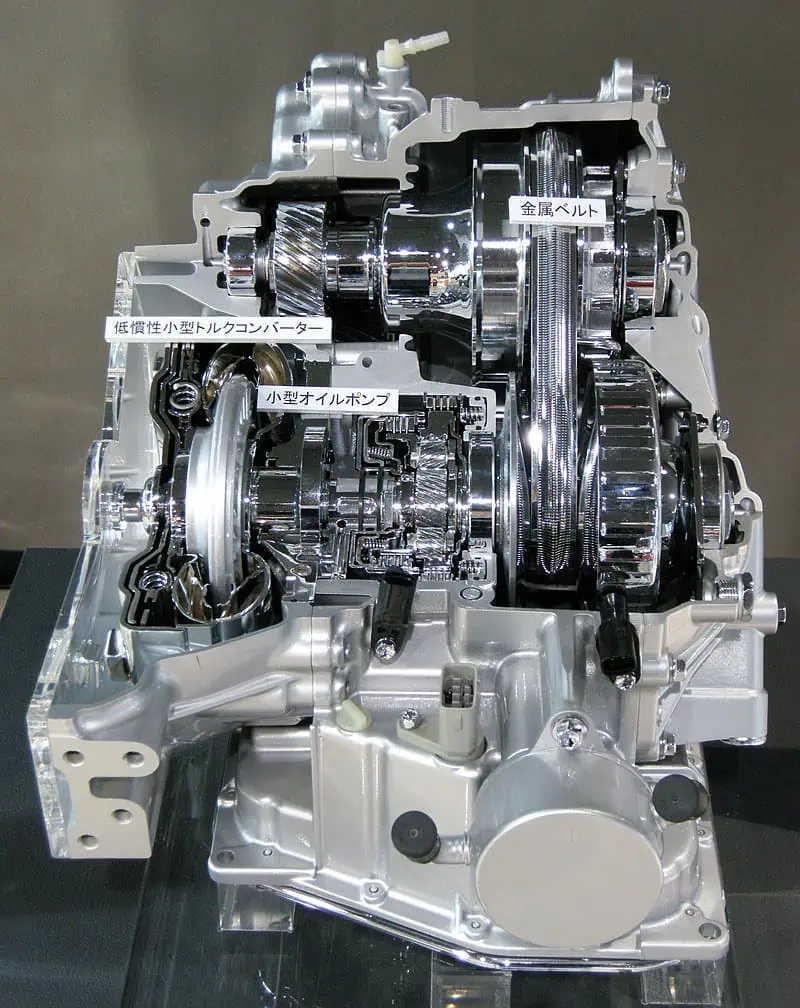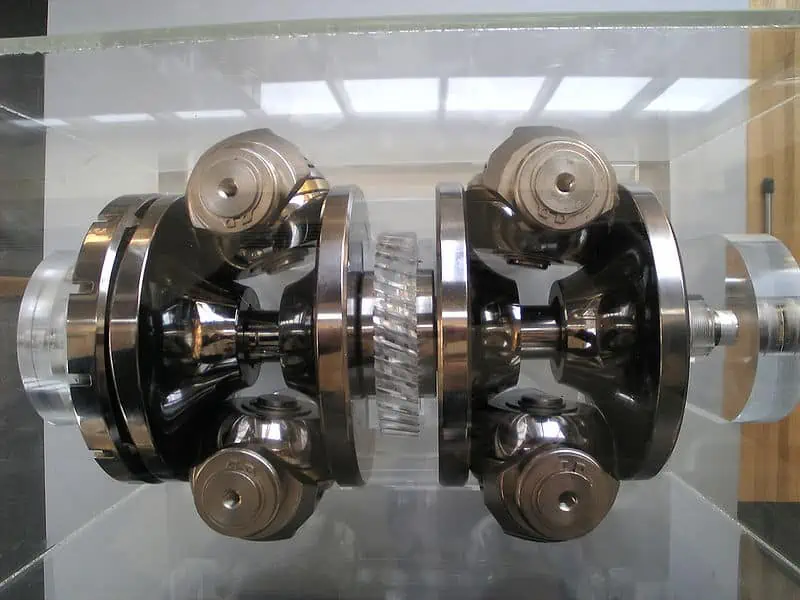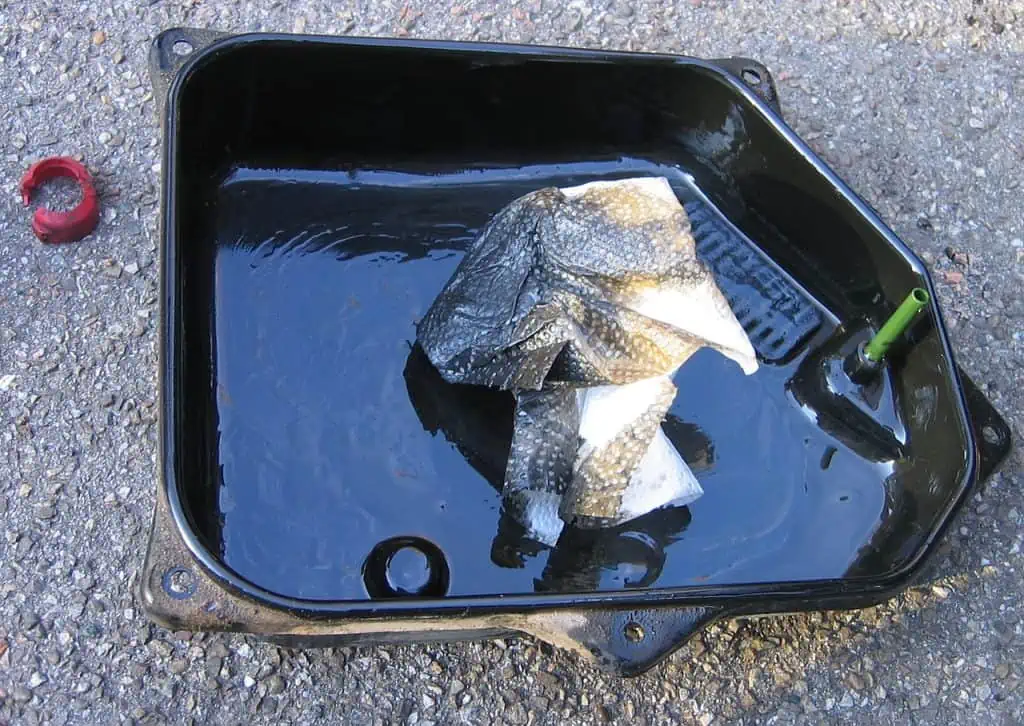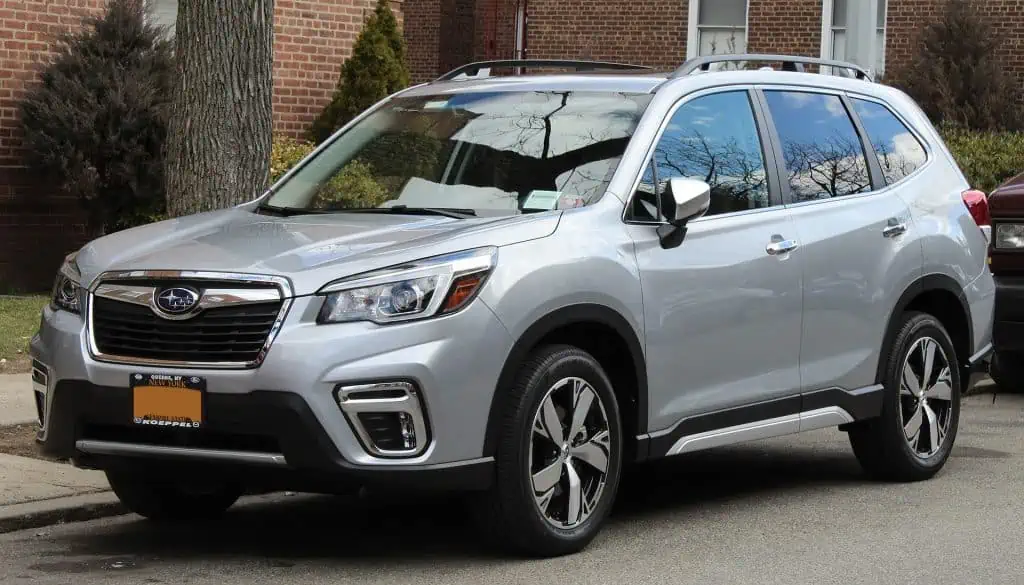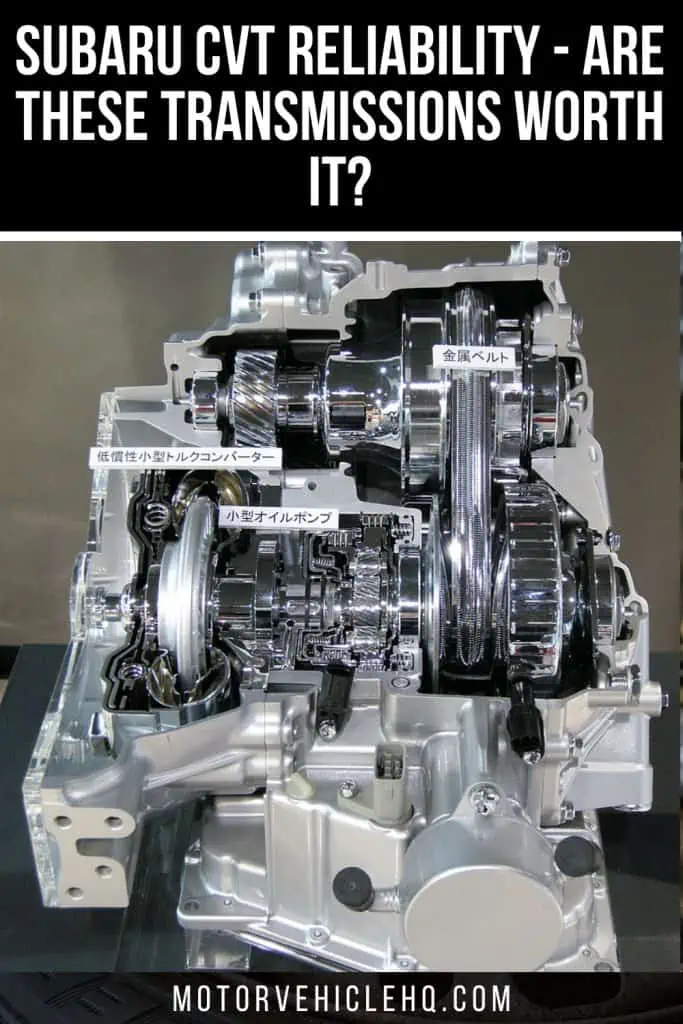There have been both supporters and detractors of the modest CVT transmission. Some people dislike it since it could feel strange compared to a more typical broadcast. While this is going on, some people will steadfastly support it due to the numerous quality-of-life advantages that CVTs offer.
But few automakers have been as adamant about sticking with CVT gears as Subaru. But given the numerous complaints about Subaru CVT issues over the years, would they suddenly change their minds?
Subaru has persevered with CVTs for many years, and it appears that it will continue to do so for a little while more. Some owners might not mind because they believe Subaru’s CVTs are a perfect fit for their vehicles.
However, the aversion is becoming more and more alarming as more people join the club of Subaru owners. The CVTs made by Subaru have occasionally had issues. Irritations abound, from stalling on the highway to violent trembling as it shifts gears.
The good news is that Subaru’s CVT issues aren’t as severe as those of Nissan, its main competition. The latter of the two has faced criticism for how subpar its CVTs may be, and in recent years, there has been plenty of class action lawsuits and recalls.
So, should you be worried about the condition of your Subaru with a CVT? Is it worth putting up with this issue, and how can you correct those CVTs? Our guide to Subaru CVT issues should address all of your urgent queries.
A CVT Transmission: What Type of Transmission Is It?
Before delving more into Subaru CVT issues, it would be beneficial to have a better understanding of how everything functions. In light of this, why even bother with CVT transmission? A continuously variable transmission, or “CVT,” is one of the most common types of transmission available today.
It coexists with the standard automatic transmission and the declining appeal of three-pedal manuals. In more commonplace automobiles, CVTs are particularly well-liked.
The way CVTs function is similar to that of traditional automatics. Using the gear lever or paddle shifters, you can manually (or sequentially) change ratios with a CVT, or you can let the CVT do it for you.
CVTs operate in a manner akin to that of conventional automatics. With a CVT, you can either manually (or consecutively) change ratios using the gear lever or paddle shifters, or you can let the CVT do it for you.
Apart from shifting the vehicle’s direction of motion, such as by putting it in neutral or reverse, CVTs won’t require any further manual input. The main distinction is that, unlike a conventional automatic transmission, CVTs lack gears. The power delivered to the wheels is controlled by gears.
Nowadays, the majority of cars might have one gear or as many as ten. In place of gears, CVTs employ a system of two variable-width coned pulleys connected in the middle by a belt or chain. The engine is connected to one pulley, and the transmission is connected to the other.
The coned pulleys will pivot inward and outward in response to your input. Which “gear” you’re in and how much power to transfer to the wheels will then depend on how these coned pulleys are arranged or placed.
Adoption of the CVT Transmissions By Subaru
There have been CVT transmissions for a very long time. Nevertheless, Subaru began using CVT gearboxes in 1989 with the Justy. As a result, it was also the first production vehicle in the US to include a CVT transmission.
Additionally, it was the first automobile in the world to combine Subaru’s ground-breaking ECVT with a 4WD (4-wheel drive) drivetrain (electronically-controlled CVT).
But until the 2009 arrival of the fifth-generation Legacy, Justy’s CVT’s unreliability caused Subaru to suspend selling CVT gearboxes to the US market.
The Legacy had a newly revised CVT (known as the Outback in some areas). It is still in use in Subaru’s current model lineup and is referred to as their “Lineartronic” CVT. Subaru’s iconic vehicles, including the Impreza, Crosstrek, Forrester, and even the fast WRX versions, all have it installed.
Subaru has relied on CVT gears for such a long time for several valid reasons. All-wheel drive is a common characteristic in Subaru’s standard models. Additionally, Subaru vehicles are also primarily propelled by a cutting-edge “boxer” engine architecture.
Overall, Subaru believes that CVTs can better control the flow of power from the boxer engine to the all-wheel-drive system in their vehicles. Additionally, CVTs should provide the most performance from their boxer engines.
The usage of CVT gearboxes will, ideally, also offer smoothness and responsive acceleration. The fact that CVT gearboxes are more compact in design is another major advantage. Because of its simplicity, the box can be significantly lighter and smaller.
This helps to increase fuel efficiency, along with the fact that CVTs might theoretically have an endless number of gear ratios. As a result, Subaru’s CVTs become a highly appealing choice when comparing the best runabout vehicles.
What are the Advantages and the Disadvantages of CVT Transmissions?
A CVT transmission can theoretically have an endless number of gear ratios. However, they have been programmed to have fixed gearing ratios when best suited for road cars, just like a traditional “geared” automatic.
A CVT transmission theoretically has an infinite number of gear ratios. However, exactly like a conventional “geared” automatic, they have been configured to have set gearing ratios when best suited for road cars.
When properly engineered, CVTs can enhance your driving and ownership experience in a variety of ways. Here are some of the main benefits that explain why businesses like Subaru continue to use CVTs.
1. More Energy Efficiency
We already knew why this is the case. Your car’s speed and power are always maintained in the best possible range thanks to the way a CVT is built. When driving in cities or on short trips, this reliable and steady power delivery significantly reduces fuel consumption.
Other than that, CVTs might help your car lose weight by having a relatively compact footprint. Overall, a CVT should be able to significantly reduce fuel consumption compared to an automatic in any vehicle.
2. Quick and Efficient Power Delivery
According to claims, CVTs are more responsive than traditional automatic gearboxes—at least in terms of mainstream automobiles. Once more, this benefit is made possible by the gearless (and theoretically single-speed) construction of a CVT.
You won’t experience “shift shock” since there are no gears to shift between. Every time there is a brief loss of power while your gearbox is actively changing gears, this is what happens.
Your Subaru with a CVT should feel at least more responsive while accelerating without shift shock. A CVT also aids in eliminating the need for the transmission to “hunt” for gears.
This defines how your transmission feels as it searches for and chooses the right gear. By being able to fluidly sustain that power delivery, a side effect of all this is that your Subaru changes “gears” more smoothly and readily with CVTs.
3. Less Moving Components
CVTs are designed to be smaller and have fewer moving parts than a typical automatic because they don’t require any gears. Because of the engineering’s simplicity, fewer things may conceivably go wrong.
This is due to decreased friction between all of a CVT’s internal parts, which results in less heat and vibrations. The transmission experiences less deterioration as a result. Due to the prevalence of Subaru CVT issues, this isn’t the case.
What are the Disadvantages of a CVT Transmission?
Despite all its benefits, installing a CVT in a car has certain drawbacks. Car manufacturers, like Subaru, have consistently come under fire from enthusiasts for insisting on installing CVTs in their vehicles.
Subjectively, enthusiasts who take great satisfaction in their tact and participation may find the smooth gears off-putting. CVTs may be seen as more monotonous or lacking in interactivity. But aside from being entertaining, CVT gearboxes have a few additional serious drawbacks.
1. They are Very Noisy
There may be a difference in noise levels between CVT-equipped vehicles and those with conventional automatic transmissions in Subarus as well. The engine runs at higher RPMs with CVTs even though the power delivery is kept steady.
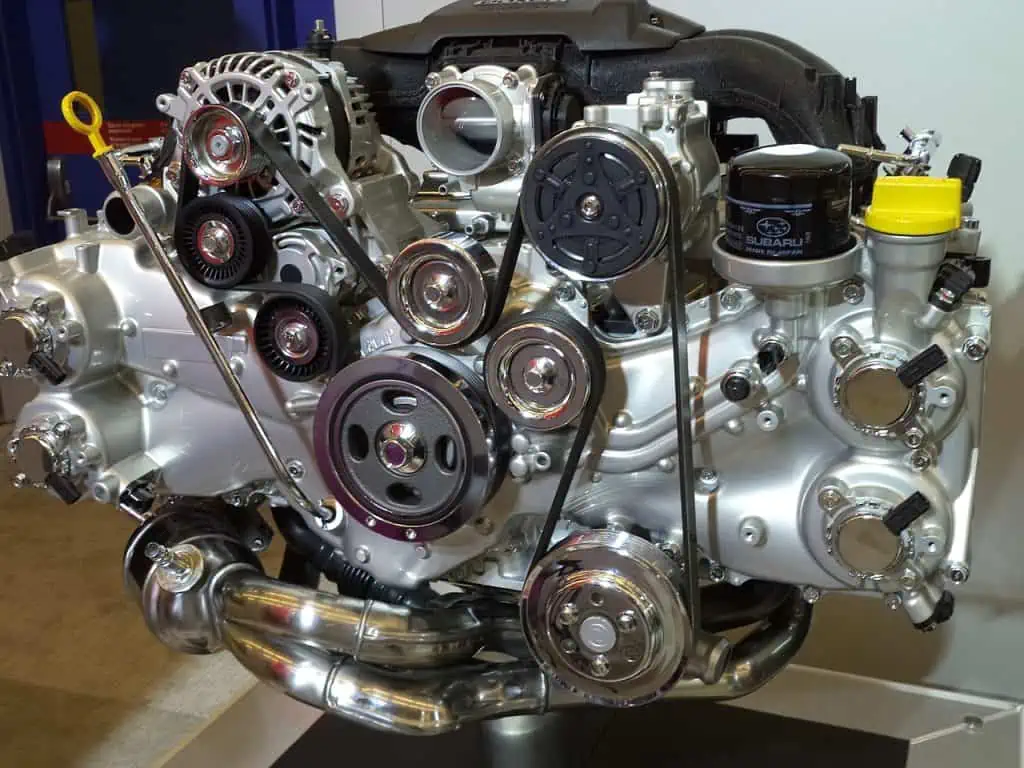
The strain or fuel use won’t go up as a result, though. However, as you drive along, you might be able to hear the boxer engine “roaring” a little bit more.
2. Much Pricer to Repair
Despite having a more straightforward design than a traditional automatic gearbox, CVTs have shown to be more expensive to maintain. There aren’t as many CVT spare parts available because they are a very new and unusual type of technology.
Furthermore, there aren’t as many technicians that are competent to work on them. Additionally, because of the way they were built, repairing a CVT requires more effort, but it is frequently necessary to replace it entirely. If things go wrong, they could end up costing more to work on as a whole.
Which are the Common Problems with Subaru CVT Transmissions?
We’ve discovered so far that Subaru CVT issues are more common than those with several other automakers. Subaru’s CVT gears aren’t as unstable as those made by Nissan or Jeep, but they still lag below the industry’s top players.
Some of the best and most durable CVTs on the market right now are produced by companies like Honda and Toyota. But in general, a CVT will be put under a ton of pressure and may eventually require significant servicing or repairs.
Thankfully, there are a few obvious indications to watch out for whether you own a Subaru or are considering purchasing one to determine when your CVT is going to break. These ought to alert you when your CVT is prematurely failing and needs to be checked up.
Here are some of the most obvious symptoms of a bad CVT for our Subaru CVT difficulties guide. We have concentrated more on the symptoms that Subaru owners specifically face.
1. Delayed Acceleration and Stalling
Some Subaru owners who have defective CVTs have stated that their vehicles will entirely stall out while in motion. There have also been instances where the car wouldn’t go faster than a certain speed.
As an alternative, you can see that your automobile accelerates slowly and slowly, or that it takes a while before any throttle input is recorded. Otherwise, their Subarus would automatically switch to a mode called “limp-home” which significantly limits speed.
2. Vibrations and Shuddering
The sudden and occasionally violent trembling of your Subaru’s CVT transmission is another obvious sign that something is wrong with it. Some owners have stated that this has happened while braking forcefully or even while driving upwards.
There are numerous reasons for these vibrations. In Subarus, it’s possible that the CVT belt or pulley could be broken. If not, the transmission’s mounts and bearings may have worn out and caused all the trembling.
3. Leakage of Transmission Fluid
To help with lubrication, CVT transmissions need their unique transmission fluid, much like traditional transmissions do. Many Subaru owners have reported that their CVTs would leak transmission fluid.
Repairing a transmission fluid leak by Hans Haase / CC BY-SA 4.0. Like conventional gearboxes, CVT transmissions require a special transmission fluid to aid with lubrication. There have been numerous reports of CVTs leaking transmission fluid from Subaru owners.
This has been reduced to their Subaru CVTs’ deteriorated seals and sealants. Otherwise, overheating could potentially cause some components to degrade too quickly. Your CVT is likely leaking if you notice a pinkish or reddish puddle beneath your Subaru.
4. Unusual Sounds
As we previously observed, vehicles with CVTs typically operate a little louder than vehicles with conventional automatic transmissions. It is said that this is because engines tend to run at higher RPMs and because of how a CVT is programmed.
But pay attention to any strange or unpleasant sounds, as these can potentially indicate that your CVT is about to fail. If your Subaru CVT is having issues, you can hear a loud whining or rattling sound while you’re driving.
Warranty for Subaru Powertrains
If you’ve seen any of the earlier-mentioned problems, then your Subaru CVT transmission may be having issues. In that circumstances, we strongly advise against driving a vehicle equipped with a questionable CVT.
The remainder of your Subaru will be put under more stress if you drive it while experiencing transmission problems. The rest of your car will degrade even more quickly under this additional strain. In the future, more time and money would need to be spent on repairs as a result.
Driving a car with a broken gearbox can also be very dangerous. For instance, it can abruptly stall when you’re on the freeway. Alternatively, you might be required to operate a vehicle at a substantially slower speed and struggle to accelerate.
This just raises the possibility of a disastrous disaster. However, there is undoubtedly some good news to be obtained. Subaru had a warranty extension program available for owners who had CVT problems.
More than 1.5 million Subarus in the US with CVTs are thought to be covered by this warranty extension in total. Given that it wasn’t a comprehensive recall, several owners thought that this was somewhat of a bittersweet development.
A total recall would frequently be mandated by the government in response to serious issues like cars stalling. But this new warranty extension ought to cover specific Subaru cars produced between 2010 and 2015.
Warranty Extension for Subaru
With their CVT, Subaru initially provided a 5-year or 60,000-mile (whichever comes first) warranty that would cover any repairs or replacements. Subaru CVT issues will now be covered for an additional 10 years or 100,000 miles under this new warranty extension program (whichever comes first).
Even if a Subaru has previously outlived such extended terms (either due to excessive mileage or age), warranty repairs may still be available.
All inspections and repairs must be requested by those owners before the expiration of the initial one-year extension, which ran through July 31st, 2018.
Any Subaru covered by the warranty extension program after that will need to have repairs made before the 10-year or 100,000-mile coverage. They won’t be eligible for CVT repairs or replacements under the new warranty guidelines until after that.
Automotive automatic transmission fluids by Hymn62 / CC BY-SA 4.0. The transmission fluid should be changed every 25,000 to 30,000 miles as part of thorough maintenance. It’s typical for CVTs to last 200,000 or even 300,000 miles or more with regular maintenance.
Any necessary CVT repairs and replacements will be covered by this extended warranty for your Subaru. It incorporates components from the CVT, such as the torque converter, sensors, switches, and valve body harnesses.
It’s important to note that the new Subaru extended warranty does not cover your CVT if it was remanufactured, reconditioned, or rebuilt by a company other than Subaru, or if the car is a rebuilt salvage vehicle.
Therefore, it is important to consider those aspects before determining whether your Subaru qualifies for its new warranty extension. The following Subaru CVT model years and makes are covered by this extended warranty extension:
- 2.5-liter Legacy models from 2010 to 2015
- 2.5-liter Outback models from 2010 to 2015.
- 3.6-liter Legacy model 2015
- 3.6-liter Outback model 2015
- 2.0-liter Impreza from 2012 to 2015.
- A 2.0-liter Crosstrek Hybrid from 2014 to 2015.
- 2.0-liter Crosstrek from 2013 to 2015.
- 2.5-liter Forrester models for 2014–2015
- A 2.5-liter Forrester Turbo from 2014 to 2015.
- WRX Turbo for model 2015.
What Does It Take to Repair a CVT Transmission?
Call your neighborhood dealership to set up an inspection, repair, and replacement of your CVT as necessary if your Subaru qualifies for the warranty extension.
If you’re unsure, you can always give your neighborhood Subaru shop a call to find out if your car is protected by the recently extended warranty. Checking to see if you can still make a warranty claim may be useful, particularly if you recently purchased a used Subaru.
However, if your Subaru CVT isn’t covered by a warranty, you’ll regrettably have to pay for the necessary repairs. We previously highlighted that fixing CVTs can take longer and cost more money than fixing standard automatics.
One of the contributing factors is the lack of mechanics and parts. You may also need to take into account the additional labor expenditures. To reach the CVT, the complete engine may need to be removed from some Subaru models.
If the CVT in your Subaru is still serviceable, a few easy fixes might be all it takes to get it running again. Repairs and replacement of particular parts often cost between $1,000 and $2,500.
You will, however, be forced to replace the CVT entirely if it is completely beyond repair on your Subaru. On average, new transmissions can run you a staggering $7,000 to $8,000, but you can get secondhand or refurbished CVTs for less than half that price.
Reliability of Subaru CVT Transmissions
By design, CVT transmissions are less complex than traditional automatic gearboxes in terms of the number of moving parts. Theoretically, this should imply that CVTs are less likely to experience problems. Only with more contemporary CVTs is this frequently the case.
A 2019 Subaru Forester uses a CVT transmission by Kevauto / CC BY-SA 4.0. This Subaru extended warranty will cover any essential CVT repairs and replacements. It incorporates CVT parts such as the torque converter, switches, sensors, and valve body harnesses.
Early CVT transmission variants had a ton of reliability problems and other peculiarities. But they have improved significantly over time, particularly in the last five or so years, and in certain situations are now more dependable than conventional automatics.
However, to guarantee the highest level of dependability, you must be meticulous when maintaining your CVT, such as by doing routine transmission fluid changes.
Is Buying a Subaru with a CVT Transmission Worth It?
A point of preference is picking a car with a CVT. A CVT will get fantastic gas mileage if you don’t expect your car to be enthusiastic or exciting, and many people prefer it to classic automatic or manual transmissions because there are no jarring gear shifts. But history and the aforementioned concerns have demonstrated that a few Subaru models from 2010 to 2018 are vulnerable to CVT issues.
How Often Should You Replenish the Oil In a Subaru CVT Transmission?
The owner’s manual for the 2020 Subaru Outback states that it is not required to check the fluid level of the continuously variable gearbox. Consult your local Subaru dealer for inspection, though, if necessary. To avoid any surprises, it’s a good idea to inspect or have the unit inspected regularly.
What Makes Subaru Continue to Use the CVT Transmissions?
If you’re wondering why Subaru still uses CVT transmissions despite all the challenges they have encountered, it’s because the advantages outweigh the drawbacks. Furthermore, given Subaru’s ongoing dedication to innovation, it makes logical to keep with the CVT because it has so many advantages.
A smoother ride is suggested as a benefit due to the lack of gears compared to a standard manual or automatic transmission. It doesn’t have to worry about shifting gears, which results in a smoother and quieter ride.
Additionally, the pulley system’s layout enables a CVT-powered car to accelerate quickly. A CVT transmission is often associated with a powerful and comfortable ride. More fuel efficiency, though, is the CVT’s main benefit.
This type of transmission improves fuel efficiency because it enables the engine to run longer at lower speeds than a conventional automatic transmission.
Due to its excellent fuel efficiency, the CVT is perfect for city driving. Subaru can also have the best of both worlds—fuel efficiency and quicker, more responsive acceleration—by using the powerful CVT.
This is made possible by the CVT’s lighter gearbox, which may give greater power and fuel efficiency than a conventional automatic transmission.
For Subaru’s smaller all-wheel-drive models like the Forester, Outback, and Crosstrek, the CVT is an excellent transmission option because it works well with lighter vehicles. These vehicles are excellent picks for a CVT transmission.
What Subaru Cars Feature a CVT Transmission?
Subaru was a pioneer in the use of CVT transmissions, and its Lineartronic CVTs are seen in several well-known vehicles. The Forester, Crosstrek, Outback, Legacy, Impreza, and Ascent are among them.
A CVT is also used to power Subaru cars with exceptional performance, such as the WRX. The CVTs in Subaru vehicles are frequently preset with either 7 or 8-gear ratios, and they also feature paddle shifters that the driver can use to manually change gears.
2018 Subaru Impreza uses a CVT transmission by EurovisionNim / CC BY-SA 4.0. You will sadly be responsible for paying for the required repairs if your Subaru CVT isn’t covered by a warranty. As was previously said, repairing CVTs can be more time- and money-consuming than repairing normal automatics.
In addition, Subaru’s CVT has special mechanisms built into it like adaptive control or incline to assist modes to help the driver even more.
What Is the Lifespan of a Subaru CVT Transmission?
Since there are fewer moving parts in CVT gearboxes than in standard automatics, they should last longer. However, in practice, some CVTs only last for at most 100,000 miles before they require significant repair and reconditioning.
Depending on how frequently you drive it, that may be as short as 5 to 10 years. However, depending on how well you maintain that CVT, this can vary greatly.
It’s important to perform thorough maintenance, such as changing the transmission fluid every 25,000 to 30,000 miles. With proper maintenance, it’s common for CVTs to last 200,000 or even 300,000 miles or more.
Which are the Regular Subarus Problems?
Although Subaru’s CVT gearboxes aren’t as unstable as Nissan’s, they still fall short of those offered by Honda and Toyota. The CVTs in the latter two vehicles are thought to be the most dependable ones available, while Subaru’s isn’t too far behind.
However, there are a few concerns with Subaru’s CVTs that you should be aware of. The most frequent early failure indicators in various Subaru CVTs have been stalling or sluggish acceleration.
Investigate any trembling, vibrations, strange noises, or transmission fluid leaks. Therefore, it’s fortunate that Subaru provided a warranty extension for these CVTs.
What Is the Lifespan of a Subaru Car?
Subarus have a decently long lifespan, lasting at least 200,000 miles before requiring a significant overhaul. Given the typical yearly mileage of Americans, that equates to about 13 years of trustworthy ownership.
Therefore, it is not surprising that so many Subaru owners adore their vehicles. Subaru is known to have one of the most devoted followings among mainstream automakers.
With proper maintenance and care, Subarus can easily survive longer than that. If you keep your Subaru well-maintained, it might easily go 300,000 miles or more.
The Conclusion
In conclusion, despite all the benefits and fun of owning a Subaru, there will occasionally be a few minor dependability concerns. As we’ve seen so far, fixing CVT issues is not inexpensive.
Therefore, it’s wonderful to see Subaru provide its customers the convenience of a warranty extension up front to assist cover the expense of your gearbox’s repair. Otherwise, you’ll be forced to carry a large, pricey bag.
If the manufacturer warranty extension does not apply to your Subaru, you might want to look into other third-party warranty providers. They add to the cost, but at least they provide you some assurance that you won’t have to take out a mortgage to fix your car’s gearbox.
Another encouraging thing is that there are techniques to stop Subaru CVT issues before they start. Or at the very least, make it live a little bit longer.
Start by driving more conservatively. Keep an eye on your throttle inputs and steer clear of any smokey or brisk acceleration. Consider turning it down a notch if you’re used to damaging your automobile by going off-road or toting a heavy load all at once.
Maintaining regular service intervals and changing the transmission fluid are other important considerations. Practice makes habit, as they say, and eventually, your Subaru’s CVT will be more than happy to move you forward.
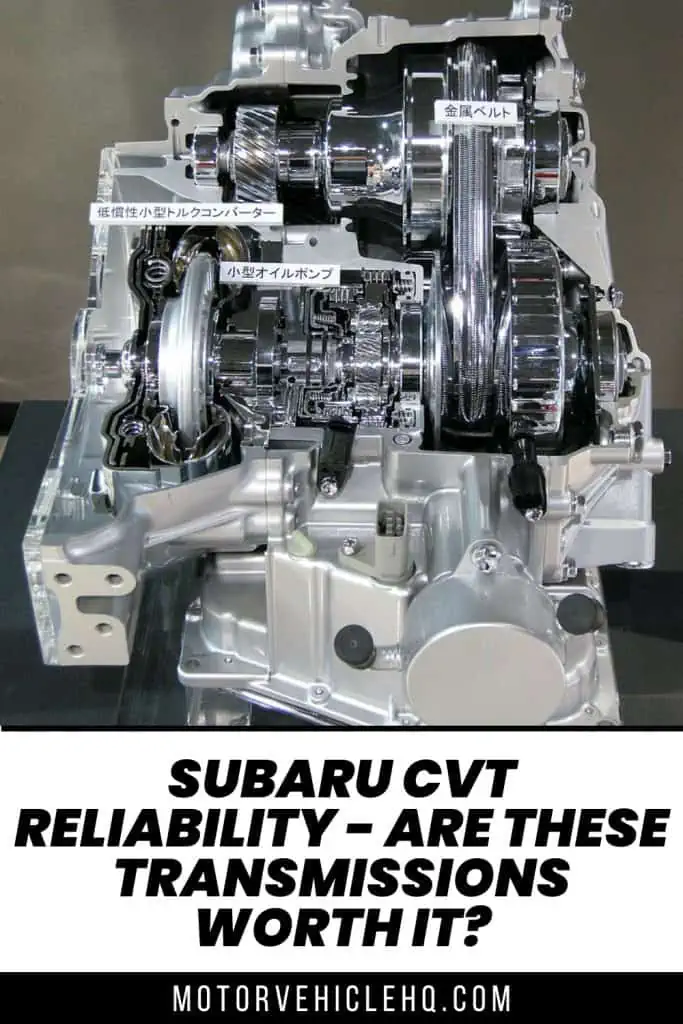
A typical CVT transmission by Hatsukari715

Jim Wicks is the founder of MotorVehicleHQ. With over two decades of experience in the automotive industry and a degree in Automotive Technology, Jim is a certified car expert who has worked in various roles ranging from a mechanic, car dealership manager, to a racing car driver. He has owned more than 20 cars over the past 15 years. Ask him about any vehicle you see on the road and he can tell you the make, model and year. He loves the aesthetics of all things cars, and keeps his vehicles in pristine condition.
In his free time, Jim enjoys getting his hands dirty under the hood of a classic car or taking long drives along the country roads. His favorite car? A 1967 Shelby GT500, a true classic that, according to Jim, “represents the pure essence of American muscle.”
